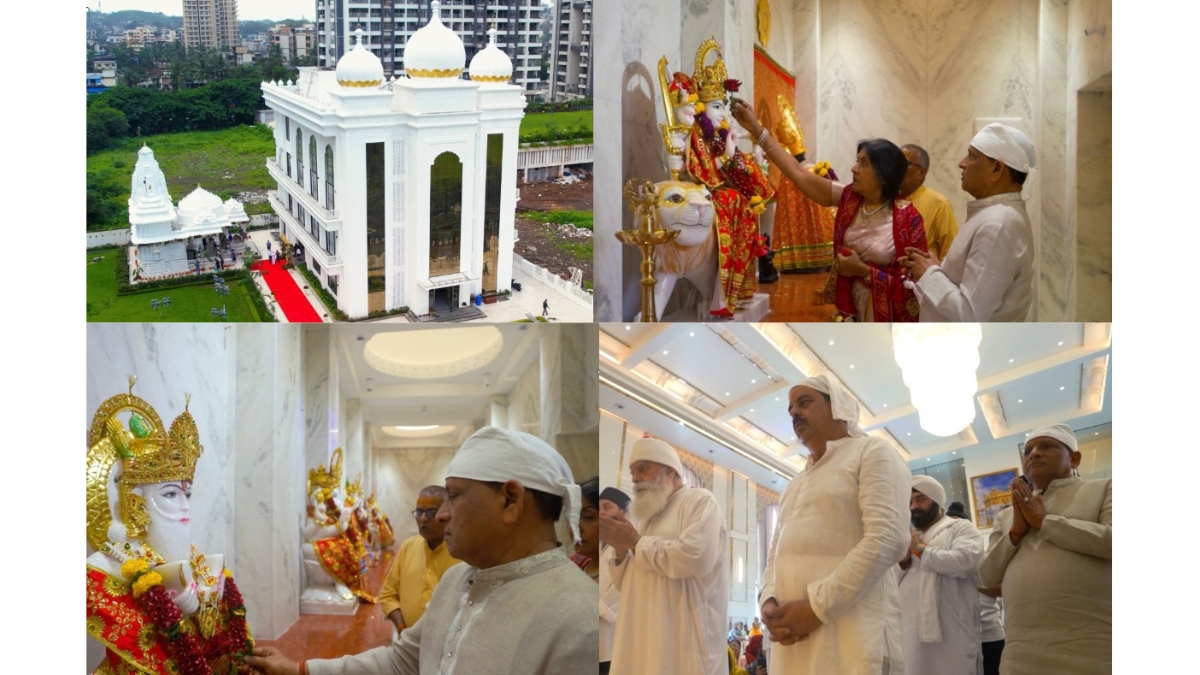New Delhi (India) July 13 : “An Ode to Classical Excellence, embracing the timeless euphony” – this phrase perhaps describes Pt. Joydeep Mukherjee’s recent performance in Kolkata on 12th July at the Indian Council for Cultural Relations’ Satyajit Ray auditorium, for their signature Horizon series program.
The young maestro, recently being bestowed with the International Brooklyn Award 2024, supported by the Arts Society, London, for his contribution to revive the rare and extinct instruments of India has showcased three instruments here in one stage to present the theme “Historical melodic heritage of Bharat”. The instruments are the 18th century Sursingar, Sarod and Mohanveena of Radhika Mohan Maitra (1948). This Mohanveena should not be confused with that of its namesake, which is an enhanced slide guitar, developed, self-named and propagated by a popular musician since the 1990s, almost around 45 years post Pt. Radhika Mohan Maitra invented the traditional Mohanveena which was a bridge instrument between the Sarod and Sursingar, named by Thakur Jaidev Singh, the-then Chief Producer of All India Radio.
Mukherjee started the ‘Alaap’ in Sursingar on raaga Miya Ki Malhar and concluded it with ‘Jor’ and climax-filled ‘jhala’. He then played three compositions of Miya Ki Malhar in Mohanveena – first one in the 12-beat Choutaal followed by two in 16-beat Tritaal. He was given great support on Tabla by the veteran percussionist Pt. Debasish Sarkar, a disciple of Pt. Kanai Datta and Pt. Jnan Prakash Ghosh. Mukherjee then moved to Sarod, concluding his presentation by playing some self-created compositions based on popular songs of Rabindranath Tagore on monsoons. This, he announced, “has been inspired by the works of Padma Bhusan Pt. Buddhadeb Dasgupta with the help of Pt. Debasish Sarkar.” Needless to say, Sarkar’s accompanying style enhanced the execution of the compositions played by Pt. Mukherjee.
Mukherjee’s program was followed by an Odissi dance drama on Ramayana by Ms. Shatabdi Mallik and her group where they portrayed their performance on ‘Mahiyasi Kayikei’. The audience enjoyed the show as every artist tried to give their best expressions.
While speaking about the history of the Mohanveena, Mukherjee said, “It was around 1943, when the young sarod player Radhika Mohan Maitra played a ‘jugalbandi’ in Sursingar with Ustad Sadiq Ali Khan on Veena at a concert in Lucknow which was attended by many great musicians of that time. Post the concert Maitra felt the necessity of a 3-in-1 instrument which would have the resonance of the Sursingar, tonal quality of a Veena while it would deliver faster ‘bol-bani’ playing capability to that of a Sarod or Rabab. In short, it would be like a bridge instrument between Sarod & Sursingar so that the sarod players don’t face difficulty in playing a Sursingar like instrument. It was required to imbibe the ‘Dhrupad-aang Been’ baaj for the sarod players – practically impossible in Sarod. After some years of experimentation, in 1948, he came up with a design of an instrument which looks like an amalgamation of the Sursingar & Sarod. In the new instrument the essence of Veena, Sursingar & Sarod was incorporated. Amazed by its design & sound quality, Thakur Jaidev Singh, the-then chief producer of All India Radio named the instrument as “Mohanveena” after the name of Pt. Radhika Mohan Maitra in 1948. He also recorded an interview of Pt. Maitra along with a recital in the same year in Akashvani. It was one of the most successful experiments where he played several National Programs and numerous Akashvani recordings on this instrument, which are now the assets of Akashvani archives. In this instrument the goat skin of the sarod was replaced by light wood and the huge ‘tabli’ of Sursingar is minimised to some extent. The bridge was flattened and one smaller bridge was added like the Surbahar for sympathetic strings, i.e. ‘Jawari’ component has been added. Doordarshan also made a documentary on this heritage instrument in 1990s, which was broadcasted several times in the National network, named – “Mohanveena – a Genesis”. Today, this ‘parampara’ of the 76-year old Mohanveena is being practiced by the disciples, grand disciples and great disciples of Pt. Radhika Mohan Maitra across the world.”
Sursingar, another traditional instrument modernized, revived and presently propagated by Mukherjee across the world, has been appreciated by the Honourable Prime Minister, Shree Narendra Modi in February 2023, after receiving the National award in Music from the Sangeet Natak Academi (Ustad Bismillah Khan Yuva Purashkar) in Instrumental music for the year 2019. He recently made the headlines across India for reviving and modernizing the 16th century Tanseni Rabab (created by the legendary Tansen) and Sur-rabab made in the 19th century Bengal. This Tanseni Rabab is the father of Sursingar while Sur-rabab is a cross between the Tanseni rabab and Sursingar, quite evident from its name – ‘Sur’ from Sursingar & ‘Rabab’ from Tanseni Rabab.
However, when questioned about the modified slide guitar in the similar name of Pt. Radhika Mohan Maitra’s instrument, he clearly mentioned, “No comments.”
If you have any objection to this press release content, kindly contact pr.error.rectification@gmail.com to notify us. We will respond and rectify the situation in the next 24 hours.




